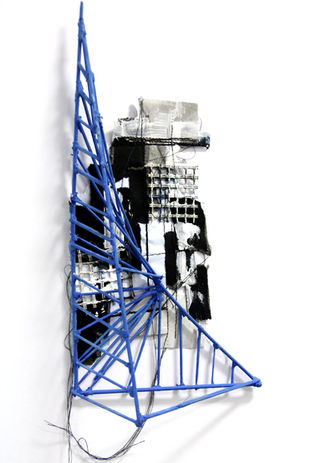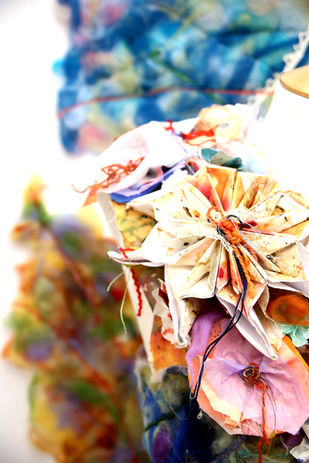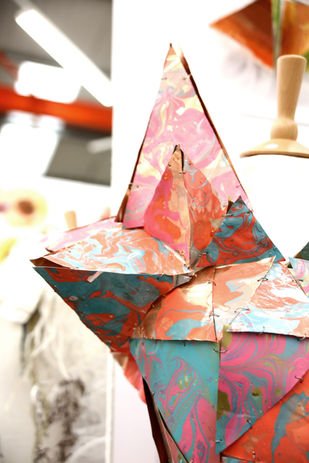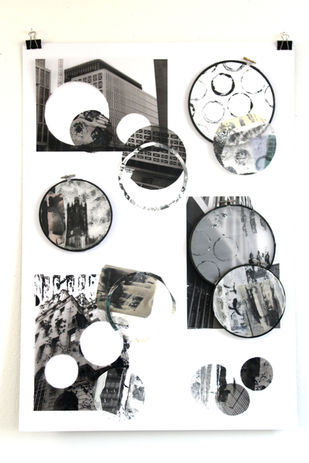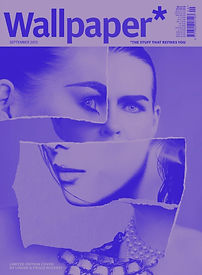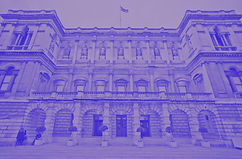Textiles
Textile Design A level offers a diverse and creative approach to fabric and print development and will allow you to gain an understanding of professional contexts including; fashion, interior and surface pattern design.
Through fashion, sustainability and interior design projects students will develop their conceptual thinking and experiment with a range of materials and techniques including; stitch, print, dye, 3D material manipulation, surface pattern design and digital processes. This course encourages students to push the boundaries of wearability and explore fashion as art, rather than focusing on traditional garment construction methods. Students will study the work of other artists and designers, including work from primary sources during visits to galleries and museums. Studying Textiles with us, you’ll be joining a thriving Art & Design Department, one of the largest A Level art departments in Britain. We have with around 450 students currently studying A levels in Art, Graphics and Photography as well as Textiles.
Exhibition 2019
A1 Board Examples
Final Piece

Read.
Ideas
'If I had to define my philosophy, it would be about exploration, a journey, a story-telling'
It is ideas that have stood front and centre in the recent history of Art and Design.
Textiles at Holy Cross mirrors this, as students are encouraged to explore a diverse range of sources, generating practical work where ideas are developed in Design.
We believe that Textiles can be life-affirming, lifechanging, teachable, learnable, intellectual and an unbelievably exciting way to look at the world.
Magazines
“It’s always about timing. If it’s too soon, no one understands. If it’s too late, everyone’s forgotten.”
When it comes to being inspired, one of the greatest ways to keep up to date with fashion and design is through magazines.
With many of these publications having great online resources, take time to look through these celebrated publications and take notes of designers that spark your interest.

Print.

Engage.
Visit
'I prefer drawing to talking. Drawing is faster, and leaves less room for lies'
As an artist it is important to stay engaged with the world around you. We are lucky to have access to a large number of galleries and studios from around the world. Take time to explore these institutions and observe the work they display.
FAQ
What other A levels does it combine well with?
Many students combine it with a second creative subject from the department if they are keen to pursue a creative career as it helps build a stronger portfolio for direct entry to university. Other popular pairings include English, Media, Film and Business.
How does it differ from GCSE?
If you have studied Textiles Art at GCSE then the A level will build on your existing skills. It is an art subject, and so we primarily look at the process of designing and creating fabrics rather than being focused on the finished product.
Is the course all digital photography?
We work with a mixture of digital and analogue photography. This means you will learn about cameras and digital editing software, but you will also have the opportunity to develop your own film, taking part in a number of darkroom workshops including camera less and pinhole photography.
Do I have to have studied Textiles before to take the A level? Do I need to know how to use a sewing machine?
You don’t need to have any experience of studying textiles previously, but you do need a keen interest in design and making things.
Will I be expected to draw?
All projects start with drawing in some form but the best drawings are often experimental using a wide range of techniques. Thread drawing for example.
If I study Textiles what are the career prospects?
After studying Textiles students often progress onto courses and careers including Fashion Design, Textile Design, Fine Art, Fashion Marketing, Fashion Journalism, Fashion Business, Fashion buying, Fashion Stylist, Visual Merchandising, Costume and Theatre Design, Surface Pattern designer, Print Maker, Interior Designer.
How is the course structured?
The first year of the course is about experimenting and discovering what you are interested in and where your strengths are. You will learn a wide range of techniques and processes in response to different set themes including machine and hand embroidery, dyeing, fabric manipulation, surface pattern design and digital printing techniques culminating in a range of final pieces from constructed garments and interior print designs to pieces of arts. In the second year there are two projects you will complete. In the first one you will devise your own project theme and build upon the skills learned in the first year to produce an innovative and personal response. The majority of this project is practical, but you are also required to complete a 1000 – 3000 word written study. The year ends with an Externally Set Assignment where you will select a topic from a choice set by the exam board and devise your own project from it to complete a practical project drawing together all your design and making skills.





